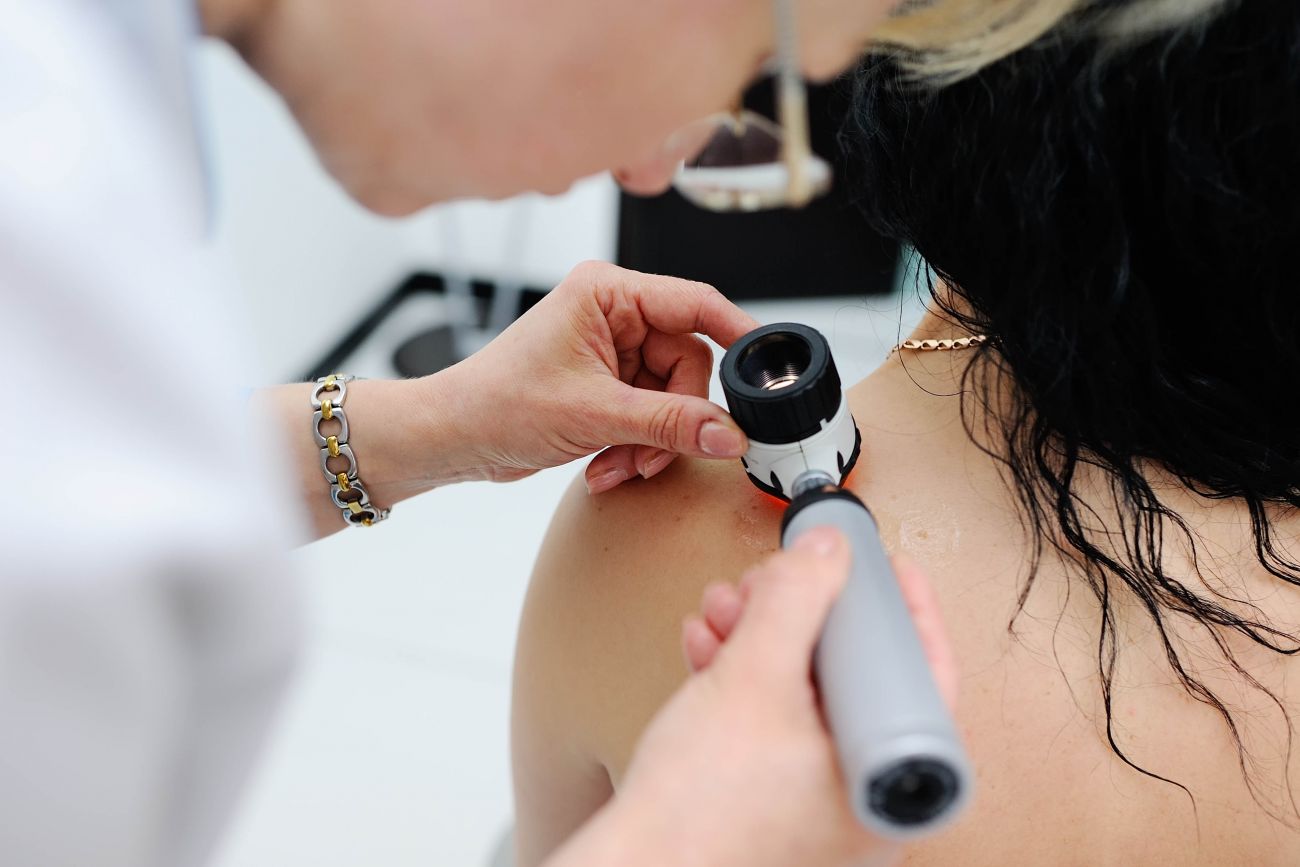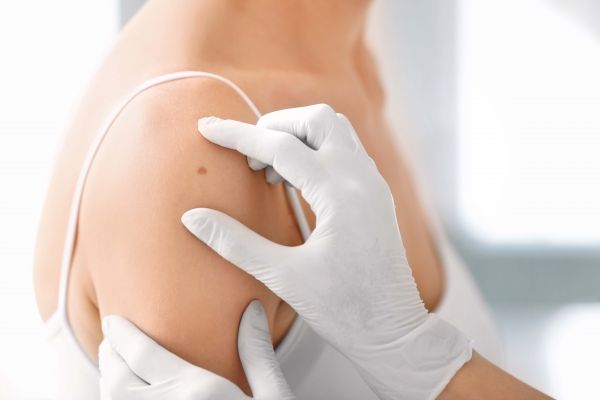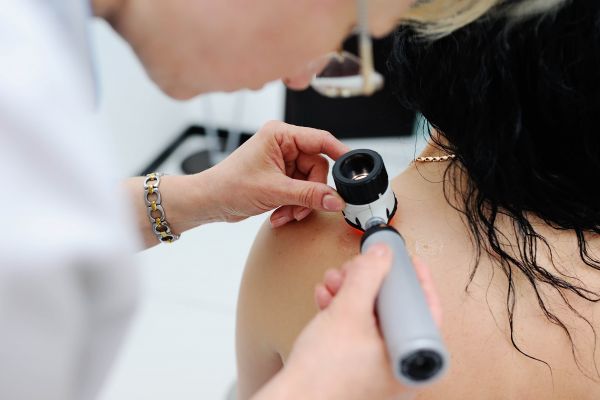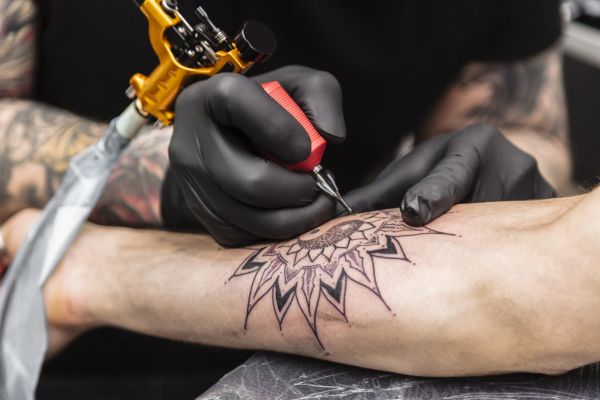Roswell Park provides proactive dermatology care to transplant patients
Did you know having a solid organ transplant increases your risk of developing skin cancer?
Cerrene Giordano, MD, is a dermatologist and Mohs micrographic surgeon at Roswell Park Comprehensive Cancer Center. Her training is focused on skin cancer surgery and one of her clinical interests surrounds the increased risk of skin cancer faced by patients who receive solid organ transplants, such as kidney, pancreas, liver, lung or heart.
The Organ Procurement and Transplantation Network within the federal Department of Health and Human Services reported more than 48,000 organ transplants in 2024. This is an all-time record for the United States and a 3.3% increase from the number of transplant procedures completed in 2023. There are currently an estimated 105,000 people on the national list awaiting a transplant, of which approximately 8,000 live in New York. Locally, both the Erie County Medical Center in Buffalo and Strong Memorial Hospital in Rochester offer organ transplant services.
Roswell Park is excited to announce it has renewed a partnership with ECMC to help streamline access to skin cancer screenings and care for this special population at higher risk.
Opening a “back door” for cancer
Some transplants have a higher risk for skin cancer development than others, and much of it has to do with the level and duration of the immunosuppressive medications needed to keep the organ functioning. “When you’re talking about a solid organ, either from a living or deceased donor, and putting it in a different person, even a related person, your body will have a proclivity to want to attack it, so you have to be put on very, very powerful medications to both suppress your immune system from attacking the organ while also allowing the organ to survive,” she explains.
“A person’s immune system is their natural defense to things like infections and cancer. When you knock down someone’s immune system, that comes with some disadvantages, one of which is that we find those patients tend to have a higher risk of skin cancer development. Additionally, when skin cancers do develop in our organ transplant recipients, they also tend to be more aggressive when compared to those without transplants,” Dr. Giordano says.
“It’s a delicate coordination that dermatology has with the transplant teams to determine what level of immune suppression is appropriate to keep the organ alive and healthy but also not have someone succumb to skin cancer.”
Why Roswell Park for skin cancer?
We provide multidisciplinary cancer care that integrates the expertise from dermatologists, dermatopathologists, plus surgical, medical and radiation oncologists.
Skin cancer can be dangerous for transplant recipients
Skin cancer has been identified as one of the leading causes of cancer-related death in organ transplant recipients, she notes. While the exact incidence of increased skin cancer risk is vague, with literature ranging anywhere from a 2-fold to 200-fold increase, the increased risk is significant. Furthermore, without the immune system as protection, it has also been shown that skin cancers tend to behave more aggressively in transplant recipients compared to the general population.
People who receive a solid organ transplant are at a higher risk of developing multiple different types of skin cancer — basal cell, squamous cell and melanoma — however, squamous cell carcinoma has the highest elevated risk in this population. People assigned male at birth, those who are older at the time of transplantation, and those who have a history of precancerous lesions or skin cancers prior to transplant have a more elevated risk of developing new skin cancers post-transplant. Roswell Park is here to offer proactive dermatology care.
Dr. Giordano may see a patient either before the transplant is done as a pre-screening or once the transplant has been complete. During the initial visit, she discusses the patient’s prior skin cancer history, family history, sun protective behaviors and prior sun exposure, along with any lesions of current concern. She performs a full body skin examination looking for any concerning spots and focusing on patient concerns. This helps to establish a baseline for future exams and educates patients about safe sun practices as well as concerning signs of what to look for that might need medical attention in the future.
Ultimately, everyone’s risk factors are different and an individualistic approach is taken that makes sense for each patient. “Someone who is low risk, let’s say a female, darker skin type, less than 50 years of age at the time of transplant, with no prior history of skin cancer is going to be considered incredibly low risk. I might only need to see her once every year for head-to-toe screenings,” Dr. Giordano says. “If I have a man over the age of 50 at the time of transplant, Caucasian, with a prior history of skin cancer, he’s going to be considered higher risk and we’ll probably want to see him more frequently.”
Know your ABCDEs
In addition to the regular skin checks, Dr. Giordano says the advice she provides is the same as it is for anyone else: Be aware of new, growing, or symptomatic spots. For melanoma specifically, the ABCDEs of skin cancer can be used as a helpful guide.
“Asymmetry, irregular borders, three or more colors, diameter greater than the head of a pencil eraser, and evolution, meaning anything new, growing or changing color, shape or size can be concerning features,” she says. “The most critical one is evolution: Something new, growing, changing or bleeding. If anything is symptomatic, if it’s painful, I want to know, the sooner the better.”
She also encourages safe sun practices to protect your skin from accumulated sun damage. The most effective prevention is sun avoidance during peak hours. This is typically from 10 a.m. to 2 p.m. However, sun avoidance is not always practical and when in the sun, the use of sun protective clothing is encouraged. This includes wide-brimmed hats, sunglasses, and long sleeve shirts and clothing that has a “UPF” label, indicating it contains material specially made to keep UV rays off of the skin.
Any exposed areas should have sunscreen applied one hour before going out into the sun and reapplied every two hours (more frequently when wet). “The best sunscreen is the one the patient is most willing to wear,” she says. But a few helpful tips she recommends: use at least an SPF of 30 or higher and make sure the sunscreen is “broad spectrum” covering all types of UV rays. Lotions are preferable to sprays for more consistent application.




